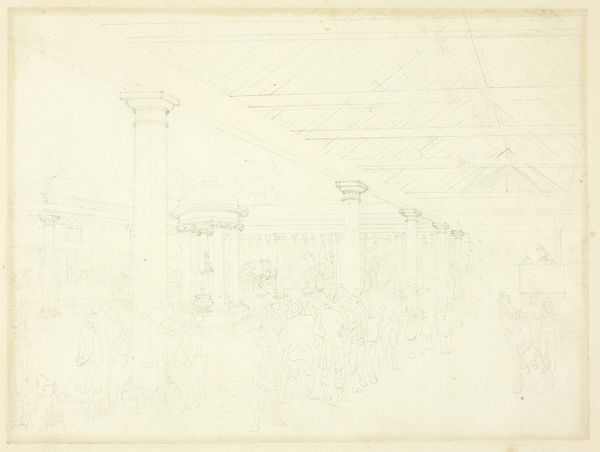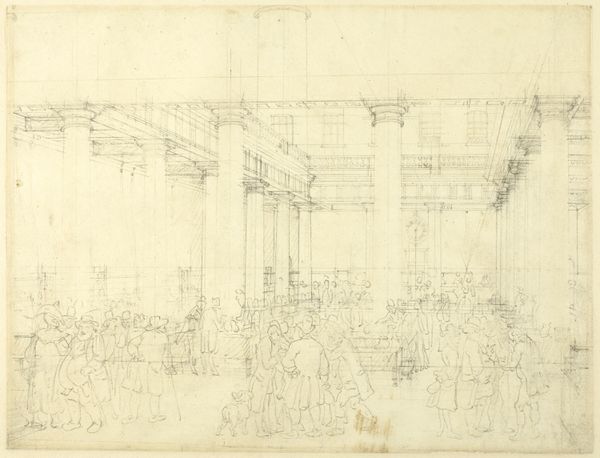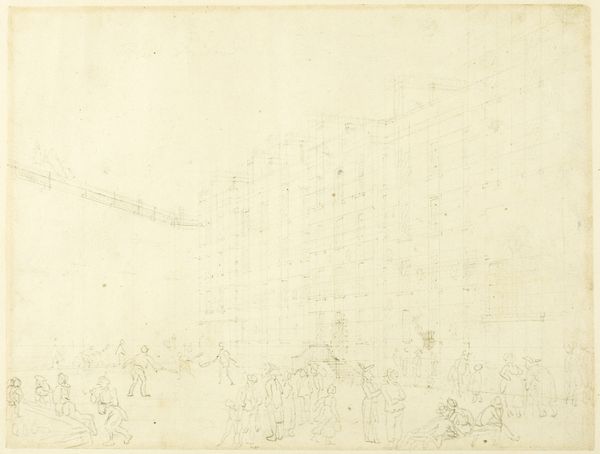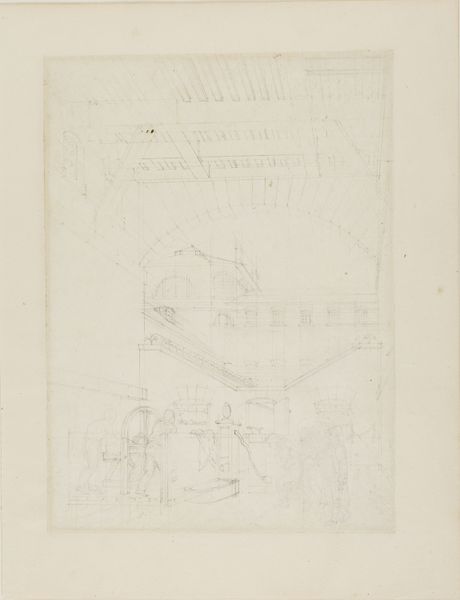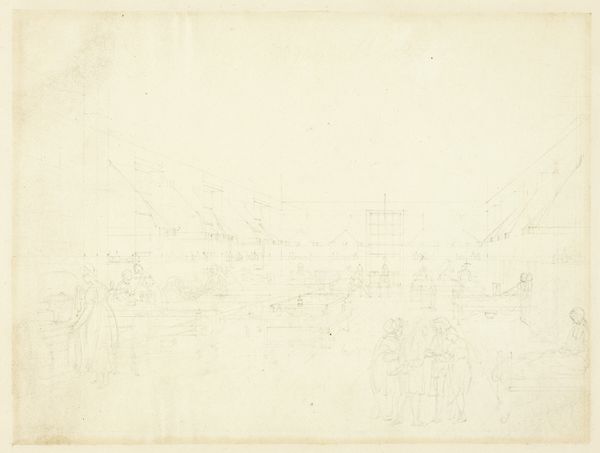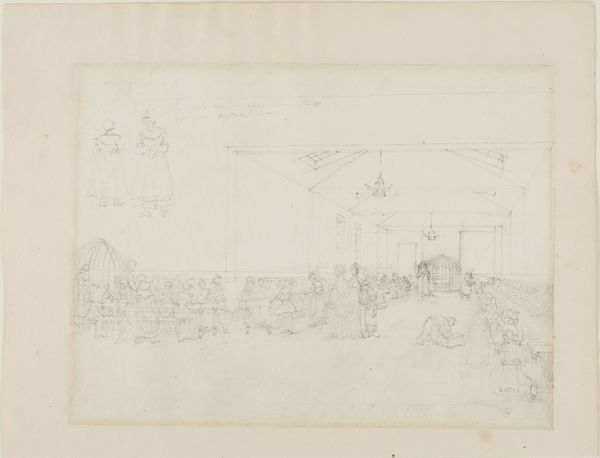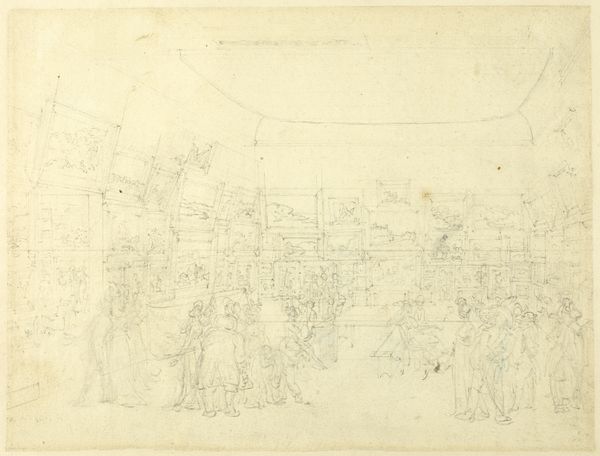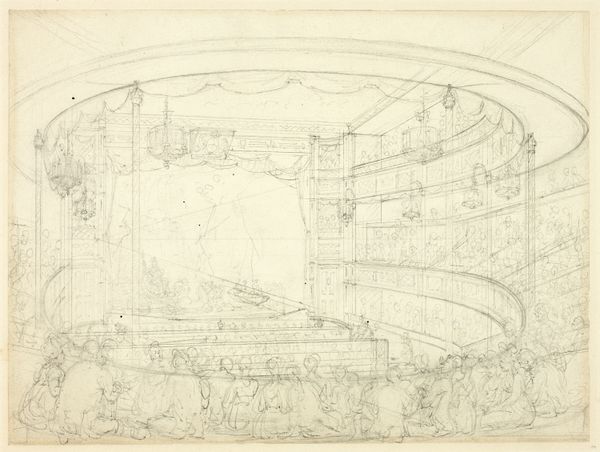
Study for The Long Room, Custom House, from Microcosm of London c. 1808
0:00
0:00
drawing, print, etching, paper, graphite
#
drawing
#
neoclacissism
#
narrative-art
# print
#
etching
#
etching
#
perspective
#
paper
#
form
#
line
#
graphite
#
cityscape
#
academic-art
Dimensions: 207 × 268 mm
Copyright: Public Domain
Curator: The delicacy of line is quite remarkable. It's almost like looking at a ghost image. Editor: Well, that is an interesting way to put it. What strikes you, from an iconographic perspective, about this early 19th-century sketch? Curator: Primarily the way the space is populated. Those clustered figures could almost be shadows or archetypes, distilled representations of the people that filled that room. But let’s get into specifics. What can you tell us about it? Editor: This is Augustus Charles Pugin's "Study for The Long Room, Custom House, from Microcosm of London," dating from around 1808. Executed in graphite and etching, it gives us a glimpse into London’s commercial heart at the time. Think of it as an urban portrait rendered through architectural space and social activity. The artwork is currently housed at the Art Institute of Chicago. Curator: The Long Room was a fascinating architectural archetype, symbolizing imperial reach through commerce and bureaucracy. Pugin’s almost skeletal representation really drives this home. What echoes or memories does it spark in you? Editor: Definitely the scale. Pugin really emphasizes the enormity of the space and its purpose, framing the ordinary citizen, rendering them nearly insignificant when juxtaposed with the institutional architecture. You have to consider how these sorts of representations functioned. How might seeing such a space—and oneself within it—influence perceptions of power and authority? Curator: Yes, the very architecture speaks of permanence and almost ordained societal structures. There's a strong narrative here of commerce and power, yet filtered through delicate, almost impermanent lines. Do you believe the choice of graphite served that symbolic representation? Editor: Absolutely. There is a duality embedded within this work, capturing the grandeur of the Empire and suggesting it is somewhat fragile. In a way it makes the observer a participant in the Long Room narrative; its linear forms offer an insight to the spirit of early 19th Century London, and its future aspirations. Curator: Very insightful indeed. Pugin has, with what appears to be fragile and pale material, etched a vivid, cultural moment for all time. Editor: Absolutely. A seemingly simple study, holding so many layers of history and symbolism.
Comments
No comments
Be the first to comment and join the conversation on the ultimate creative platform.
